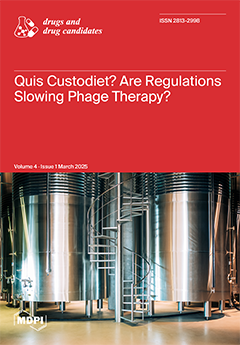Background/Objectives: The marine sponge
Plakortis halichondrioides is notable for its capacity to accumulate a large array of secondary metabolites. The present research aims at discovering new secondary metabolites from
P. halichondrioides with potential applications in medicine.
Methods: Plakortilactone (
1) and
seco-plakortide F acid (
2), two new polyketides, along with known manadodioxan D (
3), 13-oxo-plakortide F (
4), plakortide F (
5), and manadodioxan E (
6), were isolated from
P. halichondrioides. We achieved the structural elucidation of
1 and
2 using modern spectroscopic methods. The relative stereochemistry of
1 was proposed on the basis of 1D- and 2D-NMR data in combination with molecular modeling studies. Additionally, the absolute configuration of
2 was established through chemical correlation to
5. We screened some of the isolated compounds against the malaria parasite
Plasmodium falciparum 3D7 non-resistant (wild-type resistant) strain, the tuberculosis bacterium
Mycobacterium tuberculosis, the prostate cancer cell line DU-145, and the melanoma cell line A-2058.
Results: minimal activity was detected for
2 against these cancer cells. In contrast,
3 and
4 displayed activity against DU-145 cells with IC
50 values of 1.6 µg/mL and 4.5 µg/mL, respectively, and A-2058 cells with IC
50s of 2.6 µg/mL and 7.7 µg/mL, respectively. In the antiplasmodial activity assay
3 appeared more active (IC
50 = 1.7 µg/mL) than
4 (IC
50 = 3.1 µg/mL). Meanwhile,
2 displayed only moderate activity (IC
50 = 39.3 µg/mL). In the antimycobacterial activity assay
2 exhibited moderate inhibition (MIC = 75.1 µg/mL). In contrast, a 1:1 mixture of
3 and
4 demonstrated higher activity (MIC = 26.3 µg/mL).
Conclusions: the biological activity data together with ADMET predictions indicated favorable pharmacokinetic properties for
3.
Full article



